So you’d like to give P.G. Wodehouse a try, but don’t know where to start? Or perhaps you’ve read the Jeeves stories and want to discover the wider world of Wodehouse.
You’ve come to the right place.
There is no correct approach to reading Wodehouse. If you ask a dozen Wodehouse fans, you’ll get at least a dozen different suggestions — and picking up the first book you come across can be as good a starting point as any. But if you want more practical advice, this guide will help you discover the joys of Wodehouse — from Jeeves and Wooster to Blandings, and the hidden gems beyond.
Bertie Wooster & Jeeves
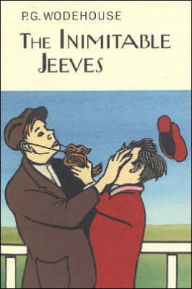
Bertie Wooster and his manservant Jeeves are P.G. Wodehouse’s most celebrated characters. They appear in a series of short stories and novels, all masterfully crafted for optimum joy. Bertie Wooster’s narrative voice is one of the greatest delights in all literature.
GET STARTED WITH
The Inimitable Jeeves (1923) short stories arranged as an episodic novel from the start of the saga.
Or leap ahead to Right Ho, Jeeves (1934; US title Brinkley Manor).
See the Jeeves and Wooster reading list for a full guide to the series.
Even Comrade Butt cast off his gloom for a space and immersed his whole being in scrambled eggs, only coming to the surface at intervals to grab another cup of tea.
The Inimitable Jeeves
Blandings
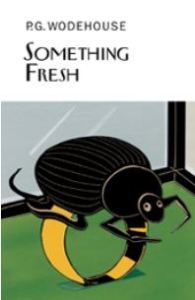
Evelyn Waugh put it best when he said: ‘the gardens of Blandings Castle are the original gardens of Eden from which we are all exiled.’
Lord Emsworth wants only to be left alone to enjoy his garden and tend to his prize winning pig, the Empress of Blandings, without interference from his relations, neighbours, guests and imposters. So many imposters.
GET STARTED WITH
Something Fresh (1915; US title Something New)
Or the classic short story collection Blandings Castle and Elsewhere (1935).
See the Blandings reading list for a complete guide to the series.
“Unlike the male codfish, which, suddenly finding itself the parent of three million five hundred thousand little codfish, cheerfully resolves to love them all, the British aristocracy is apt to look with a somewhat jaundiced eye on its younger sons.”
‘The Custody of the Pumpkin’ in Blandings Castle and Elsewhere
Psmith
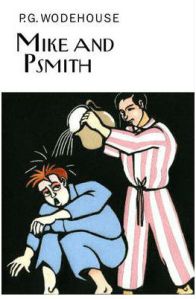
Psmith (the ‘p’ is silent as in pshrimp) made his first appearance in an early Wodehouse school story. Wodehouse knew when he was onto a good thing, and Psmith made the transition to adult novels along with his author. Adoration for Psmith among Wodehouse fans borders on the cultish, and for good reason (he certainly makes me swoon).
GET STARTED WITH
Start at the beginning with Mike and Psmith in their student days.
Or start with their final adventure in Leave it to Psmith (1923) and work your way backwards.
Both are wonderful.
Mike nodded. A sombre nod. The nod Napoleon might have given if somebody had met him in 1812 and said, “So, you’re back from Moscow, eh?”
Mike and Psmith
Ukridge

The character Wodehouse readers love to hate, Ukridge is a blighter and a scoundrel, but his adventures are comedy gold. If you’ve ever had a friend or relation who pinches items from your wardrobe without asking, and is perpetually ‘borrowing’ money, this series is for you.
GET STARTED WITH
The short story collection Ukridge (1924)
Or the novel Love Among the Chickens (revised in 1921).
Somebody met him in New York, just off a cattle-ship. Somebody else saw him in Buenos Ayres. Somebody, again, spoke sadly of having been pounced on by him at Monte Carlo and touched for a fiver. It was not until I settled down in London that he came back into my life. We met in Piccadilly one day, and resumed our relations where they had broken off. Old associations are strong, and the fact that he was about my build and so could wear my socks and shirts drew us very close together.
‘Ukridge’s Dog College’ in Ukridge
Uncle Fred
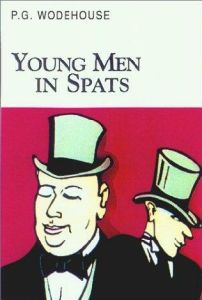
Pongo Twistleton’s Uncle Fred is a dapper old gent with a twinkle in his eye and a penchant for adventure. The sort of chap who can adopt an alias at the drop of a hat, and frequently does. He first appeared in the short story, Uncle Fred Flits By (1935), which was voted the favourite short story by members of the international Wodehouse Societies.
GET STARTED WITH
Uncle Fred Flits By in the story collection Young Men in Spats (1936)
Or try Uncle Fred in novel form with Uncle Fred in the Springtime (1939).
I don’t know if you happen to know what the word ‘excesses’ means, but those are what Pongo’s Uncle Fred from the country, when in London, invariably commits.
‘Uncle Fred Flits By’ in Young Men in Spats
Short Stories
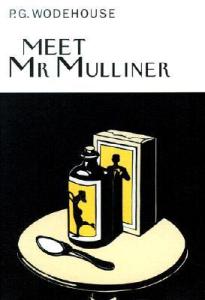
Wodehouse was a master of the short story format and would be classed alongside Chekhov as one of the greats if he hadn’t been a humourist.
GET STARTED WITH
Meet Mr. Mulliner (1927) is the first in the superb Mulliner series.
For the Oldest Member golfing stories try The Clicking of Cuthbert (1922; US title Golf Without Tears). No understanding of golf is required.
Vladimir specialized in grey studies of hopeless misery, where nothing happened till page three hundred and eighty, when the moujik decided to commit suicide.
The Clicking of Cuthbert
The novels
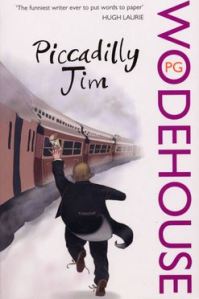
Plot spoilers are less of a problem with Wodehouse’s ‘stand-alone’ novels, though some are connected by recurring characters. There are plenty to choose from, but if you’re chronologically inclined, some good examples from his early period include Uneasy Money (1916), Piccadilly Jim (1917) and The Small Bachelor (1927).
The residence of Mr. Peter Pett, the well-known financier, on Riverside Drive is one the leading eyesores of that breezy and expensive boulevard. As you pass by in your limousine, or while enjoying ten cents worth of fresh air on top of a green omnibus, it jumps out and bites at you.
Piccadilly Jim
The School Stories
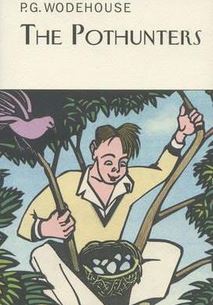
Wodehouse began writing at a young age and his early school stories depict English public-school life as he knew it — with plenty of sports, as well as the literary and classical references he used so cleverly in his adult work.
GET STARTED WITH
Wodehouse’s first published novel, The Pothunters (1902)
Or head straight for his best work in the genre, Mike and Psmith.
See the School Stories Reading List for a guide to the series.
The chronological challenge
Many of Wodehouse’s stories first appeared in magazines such as The Strand (UK) and The Saturday Evening Post (US), but weren’t always published in book form in the same order, or even under the same titles. If you read Wodehouse in order of book publication you will encounter spoilers, particularly in the Blandings series. Wodehouse also rewrote some of his early stories, so the beginning isn’t always the best place to start. It’s also helpful to know that Wodehouse’s books were often published under different titles in the UK and US.
In putting this series together, I’ve referred to many excellent online resources for Wodehouse fans (such as Neil Midkiff’s outstanding short story and novel listings) and invaluable advice from Wodehouse expert Tony Ring. Any errors, omissions and loony opinions that remain are entirely my own.
Where to buy Wodehouse
Unless you are particularly fortunate, your local bookstore is unlikely to stock much Wodehouse, but they should be able to order books for you. If your local booksellers are as lovely as mine, this adds considerably to the pleasure.
Most books are currently in print and available online (links included in this series), including second hand and rare editions. Don’t be alarmed by the pricing of first and collectable editions — it is possible to read your way through Wodehouse relatively cheaply in paperback, and most titles are now available as Ebooks.
And don’t forget your local library.
Happy reading!
HP
More posts in this series:
- A reading list for the Jeeves and Wooster stories
- A reading list for the Blandings stories
- A reading list for the school stories
With more reading lists to follow.
HP

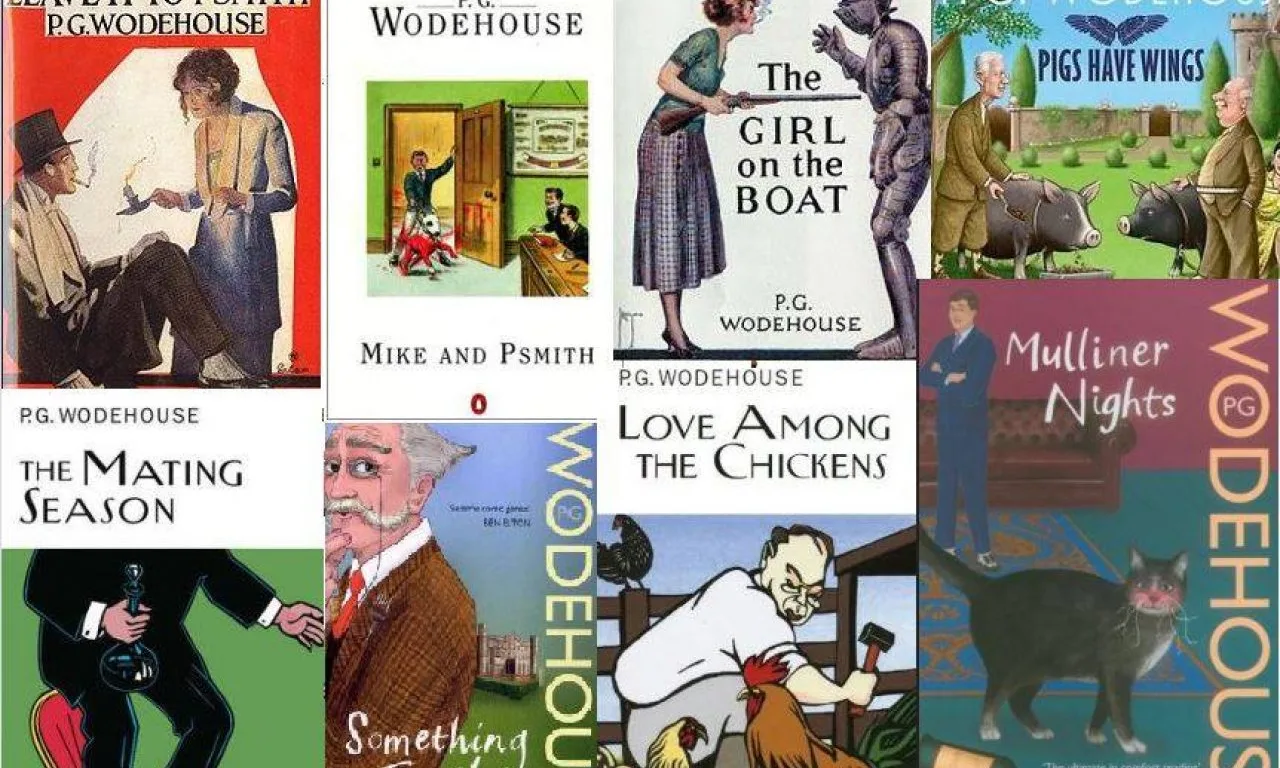
What a wonderful beginning!
LikeLiked by 1 person
Thank so much, Randy.
LikeLike
I love the blog but I have to offer a mild dissent on Thank You, Jeeves. Wodehouse was a man of his time and while that doesn’t generally create a problem – indeed it is part of his charm and appeal – Thank You, Jeeves is perhaps a bit too much of his time. I think some readers are likely to be disconcerted by a novel one of whose main gag lines is Bertie in blackface. I find the novel tough going myself for that reason and others. Thus, I would not recommend it to folks just starting out with Wodehouse. And can I make a plug for the school stories? I find them funny, involving and – as I get older – poignant. They are neglected gems. Thanks for your delightful blog and please keep up the good work!!!
LikeLiked by 1 person
My dear old Doug, you don’t think perhaps that old theatrical Plum was ridiculing the minstrel shows, Al Jolson et al that were popular at the time — all of them white men in black face? As Bertie said of Spode and his Black Shorts: “How perfectly foul.” Plum always had a dig at extravagant displays — putting on side (is that the term?) In any case, how might Bertie in black face with banjolele compare as a comic device with a crazed communist committing arson? How about Bertie finding a girl in his pyjamas, in his bed? How about abduction and imprisonment by a captain of industry? I mean to say, what?
LikeLike
It’s a fair cop.
LikeLike
What indeed!
LikeLike
What Ho, Doug. Thanks for the comments. I appreciate getting your thoughts on this as it wasn’t something I had considered. I suppose that, having grown up in a B&W minstrel-free world, it seems nothing more than a historical curiosity to me. But I can readily appreciate the hurt and strength of feeling that led to the demise of this form of ‘entertainment’ (Well… I say demise, but ‘blacking up’ is still done from time to time in modern British comedy). I can certainly understand why people find it degrading.
I don’t recall finding ‘Thank You, Jeeves’ uncomfortable reading (and I don’t think Wodehouse was being intentionally degrading by putting his characters in ‘blackface’ makeup). However, it has been several years since I last read this book –it’s not one of those favourites that I read often– so I’m going to read it again and give this further thought.
Wodehouse was ‘of his time’ certainly, but all writers are –this isn’t particular to Wodehouse. I think (hope) most readers can tell the difference between occasional instances of outdated language (and the use of ‘blackface’ makeup in this case) and those writers who hold racist or other despicable views.
LikeLike
Doug. I have re-read the book and I am inclined to agree that it is not for first time readers. I am going to edit this piece accordingly — so your comments won’t make sense to anyone who comes across it in future, but we’ll know you were the good egg with the sound advice
.
LikeLike
It’s a fair cop.
LikeLike
Don’t forget you can also get them from the library!
LikeLiked by 1 person
What ho eggs, beans and crumpets,
I would like to start by thanking Miss Plum for going to such well presented lengths as this fair web site provides, which is most informative.
I have been perusing these pages to get to grips with the works, as I have been using the services of the library app calling itself Borrow Box. Dashed useful and free to boot.
Jonathan Cecil seems to read the majority of titles but sadly there is a large hole in the scheme. To wit, very few of the Jeeves and Wooster stories. A very sorry state of affairs indeed. If any kindly eggs might know of a remedy for this serious breach of standards I would be much obliged.
LikeLiked by 1 person
They’ve all been recorded as audiobooks, so they should be available in one format or another. Some are on You Tube. Some ar available via Audible and Amazon.
LikeLike
Reblogged this on ashokbhatia.
LikeLike
Bless you
LikeLiked by 1 person
I like your suggestion of, “start with his final appearance in Leave it to Psmith (1923) and work your way backwards.” On Sir Wodehouse’s birthday, a couple weeks ago, I began rehearsing a chapter of this book, which I recorded for LIbriVox.org, and discovered just my flavor of comedy. I’ll have to work my way backwards now…
LikeLiked by 1 person
That sounds like a fabulous project, and a great Wodehouse book to start with. It’s one of my favourites.
LikeLiked by 1 person
Thank you so much for your valuable information. I am a new discoverer of P. G. Wodehouse via my online local library audio app. The vocal actors are top notch and bring the fun alive. I delight in the witty tales, but was uncertain of a preferable order. As you have now helped me see, I will simply enjoy them as they become available.
Much obliged,
Angela
LikeLiked by 1 person
I am so glad to hear this, Angela. Thank you for letting me know. You have many delightful hours ahead of you.
LikeLike
You have missed out Uncle Dynamite.
LikeLike
Hi folks, just found the blog. What a wonderful source of pleasure and comfort!
What is the most efficient way to buy all of PGW’s works? I want to get them all but with as many collections and omnibuses. So that I have to buy as few individual books as possible.
I left my collection in India and have tomstart all over again in US ;-(
LikeLike
Just came across PHWodehouse Inmitible Jeeves / its 2022 and far away from the 1950 it’s been strongly recommended but it’s so different to what I’m used to not sure how to get into it And reading through this reading group I can see there’s a big following and delight in his writings (Sydney)
LikeLiked by 1 person
Welcome to the following, Ange. I hope you enjoy exploring Wodehouse’s writing.
LikeLike
Good advice. My initial reading of PGW books very much depended upon what was readily available to borrow or buy in old Bangalore (1950’s)! By the way, I did not know that shrimp was pronounced as ‘shrim’ or am I being too literal?😊
LikeLike